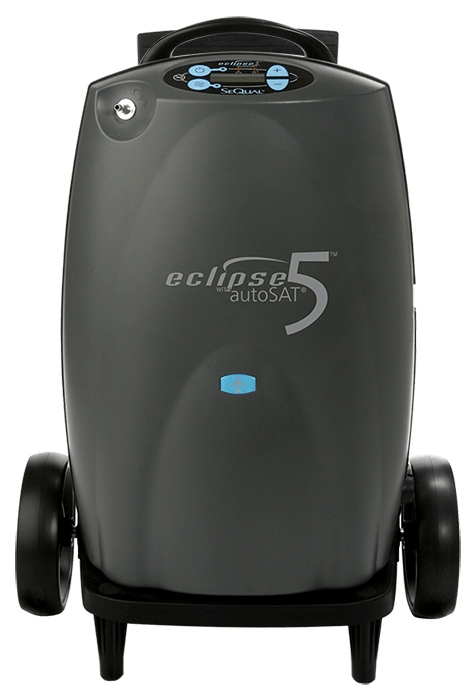[Last updated November 5, 2024]

Long-term care costs can add up over time. Luckily, Medicaid can help qualifying individuals cover the costs of long-term care. People who have limited income and assets and who clinically qualify can gain access to long-term care services through Medicaid if they live in nursing homes, some assisted living facilities depending on their state, or at home.
Understanding the complexities and nuances of Medicaid and long-term care isn’t easy. Here, we’re explaining the basics about Medicaid and how it can cover long-term care services for people who qualify. First, we’ll define long-term care services, then Medicaid, and then we’ll explain how Medicaid can cover long-term care costs depending on the individual’s situation.
What are long-term care services?
Long-term care (LTC) services help individuals with illnesses, disabilities, or other conditions that limit their ability to care for themselves. LTC services can provide assistance with personal care tasks. Depending on the individual’s needs, these services may also be medical in nature.
Long-term care services may include:
- Assistance with activities of daily living (bathing, dressing, eating, toileting, mobility, and transferring).
- Housekeeping and laundry.
- Meal preparation.
- Respite care.
- Physical, occupational, or speech therapy.
- Medication management and administration.
People can receive long-term care services in different settings, including
- Nursing homes: These facilities offer care for individuals who need substantial assistance with activities of daily living or medical services.
- Assisted living facilities: These communities are residential-type settings that offer personal care services for individuals who need some support with their activities of daily living. Typically, residents do not need as much help with ADLs as residents who live in nursing homes.
- At home: Individuals can also bring the support they need into their homes through either home care or home health care service providers.
Long-term care services are important to a senior’s health and safety. While some long-term care services, like bathing and getting dressed, are not medical services, they still need to be safely and successfully performed every day to maintain the individual’s hygiene and well-being.
Since some long-term care services are personal and not medical services, health insurance plans, like Medicare, usually don’t cover them. They still come at a cost: In 2023, the median cost of a home care provider in the U.S. was $30 per hour. Four hours of help every day would cost over $3,000 per month at that rate, which is a staggering amount for many seniors to afford on their own. To help qualifying seniors with low income and long-term care needs afford these services, Medicaid can cover many of these costs. Let’s take a look at Medicaid next.
What is Medicaid?
Medicaid is an assistance program for people with low income and few or no assets. It is jointly run by the federal government and individual state governments. People can apply through their state Medicaid agency and, if they meet eligibility requirements, receive coverage for health care services, including doctor visits, hospital stays, and more. In some states and under certain circumstances, Medicaid may also cover long-term care services. Eligibility for Medicaid and the services it covers vary from state to state.
How is Medicaid different from Medicare?
Some people use the words “Medicaid” and “Medicare” interchangeably, but it’s important not to confuse the two: They are two separate programs. Both programs offer health insurance, but Medicaid is for people of any age who have low incomes. Medicare, on the other hand, is health insurance mainly for people ages 65 and older and some younger people with certain health conditions or disabilities. It could be helpful to think of Medicaid as “aid” for people who have low income and Medicare as health “care” for seniors.
In some instances, seniors who qualify for Medicare based on their age can also qualify for Medicaid because they have low income.
Both programs cover a wide array of services, but Medicare is more limited because it focuses on medical services and other medically necessary costs. Medicaid covers medical services and can also cover other costs, such as long-term care services for seniors who clinically qualify.
Now that we’ve explained what long-term care services are and what Medicaid is, let’s explore what kinds of long-term care services Medicaid can cover.
When seniors can use Medicaid to pay for long-term care
Older adults can qualify for Medicaid to pay for long-term care if they meet the financial and clinical requirements. The exact services that Medicaid can cover will vary depending on the setting in which they receive those services. We mentioned earlier that seniors can receive long-term care services in a few different settings, including nursing homes, in some assisted living facilities, and at home. Let’s go over Medicaid coverage of long-term care in these settings now.
Long-term care in a nursing home
If the individual financially qualifies for Medicaid and is certified as requiring a nursing home level of care, Medicaid will pay for it. Medicaid will assess your financial situation to ensure you meet their income and asset limits. Your health care provider or case manager will also determine whether you clinically qualify for nursing home care. Note that Medicaid will not pay to live in a nursing home if you are only there only for custodial care or a nonmedical reason.
State Medicaid programs set their own criteria for this determination process and will ultimately decide whether you meet eligibility requirements for nursing home services. Once all these processes are completed, you will receive a determination of admission to the facility or a denial notice.
Care in a nursing home offers the highest level of support when compared to other types of senior care. Long-term care you can receive if you are on Medicaid and live in a nursing home can include help with personal care services, like help with bathing, dressing, toileting or continence issues, feeding, and walking around. If you need skilled nursing care, like wound dressing, tube feeding, or other skilled tasks, they will help you with those, too.
Assisted living services
Medicaid covers long-term care in assisted living in some but not all states. Even if a state allows assisted living communities to accept Medicaid, not all communities in that state will. Typically, in a state that allows it, Medicaid covers some or all of the costs of care services but not room and board at assisted living facilities. If your state allows Medicaid to pay for assisted living services, when searching for communities in your area, ask each one if they accept Medicaid as a payment method.
Some assisted living communities that accept Medicaid may require a resident to be able to pay their costs for a certain amount of time before needing to go on Medicaid. Commonly, they require the resident to guarantee they can pay for 24 months.
Home- and community-based services (HCBS)
People who need care but want to receive it at home rather than in a facility may be able to use a home- and community-based services (HCBS) Medicaid waiver to get coverage for this type of care. Through Medicaid waivers, the government can waive certain rules that usually apply to the types of care Medicaid covers. In this case, waiving the normal rules allows people to receive care in their homes rather than in nursing homes.
Components of HCBS waivers can vary widely but might include services like personal care, chore services, and respite care, which can be provided in the home, in adult day care, or in a facility.
For example, New Jersey’s Medicaid program, NJ FamilyCare, operates a Managed Long-Term Services and Supports (MLTSS) program. It covers a number of long-term care services for Medicaid recipients and aims to “expand home and community-based services, promote community inclusion and ensure quality and efficiency,” according to the state’s Department of Human Services. People who participate in this program can receive the following services while living at home:
- Care management.
- Home and vehicle modifications.
- Home-delivered meals.
- Respite care.
- Personal emergency response systems.
- Mental health and addiction services.
- Community residential services.
- And more.
Keep in mind that every state’s Medicaid program is different. Your state may offer different long-term care service coverage for Medicaid recipients who live at home, so it’s important that you check with your state’s Medicaid office to learn what services you can access.
The Medicaid health plan you are enrolled in is an excellent source of information for finding Medicaid-enrolled long-term care providers in your area. You may also contact your state Medicaid program directly or speak to your health care provider for help with the next steps.








